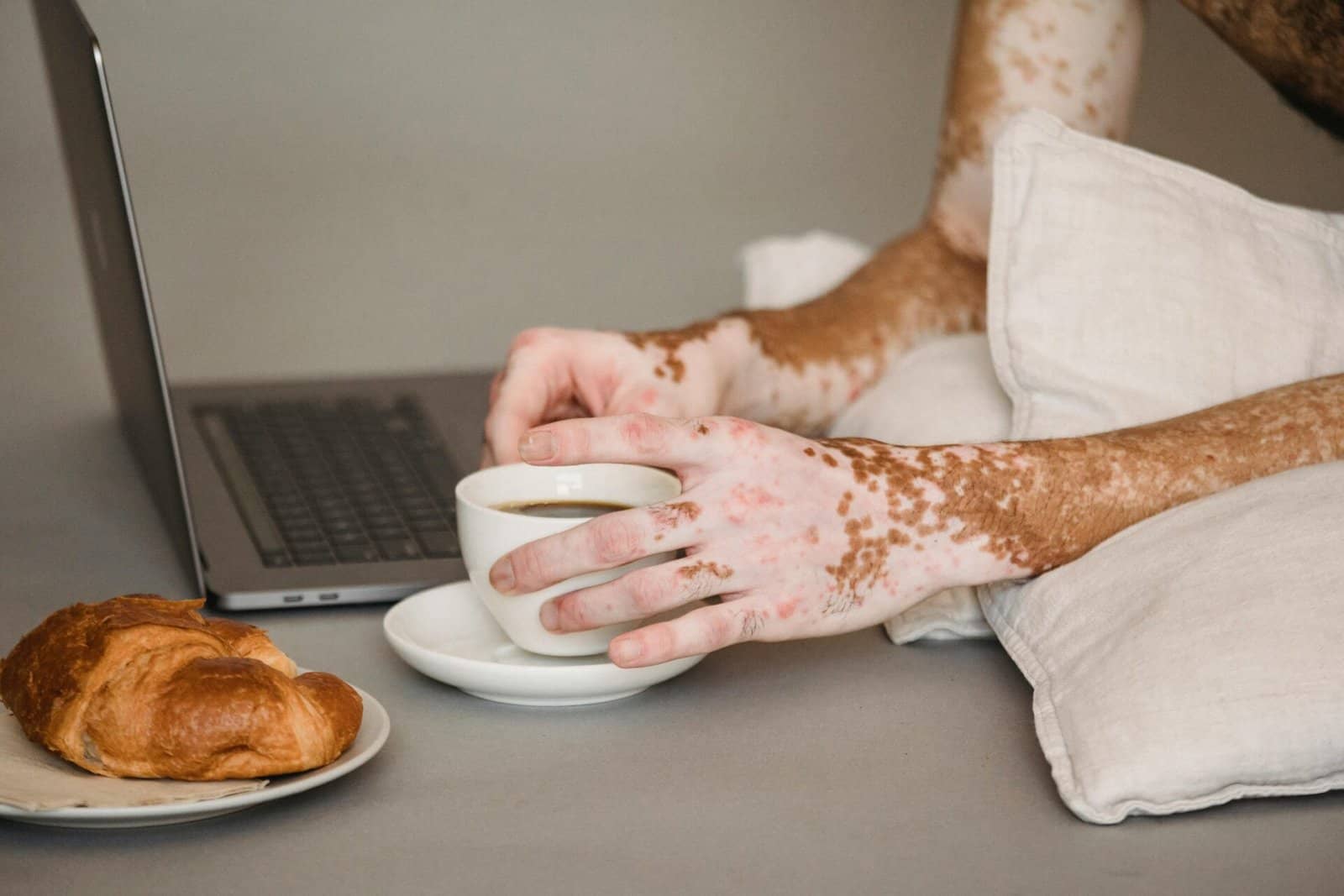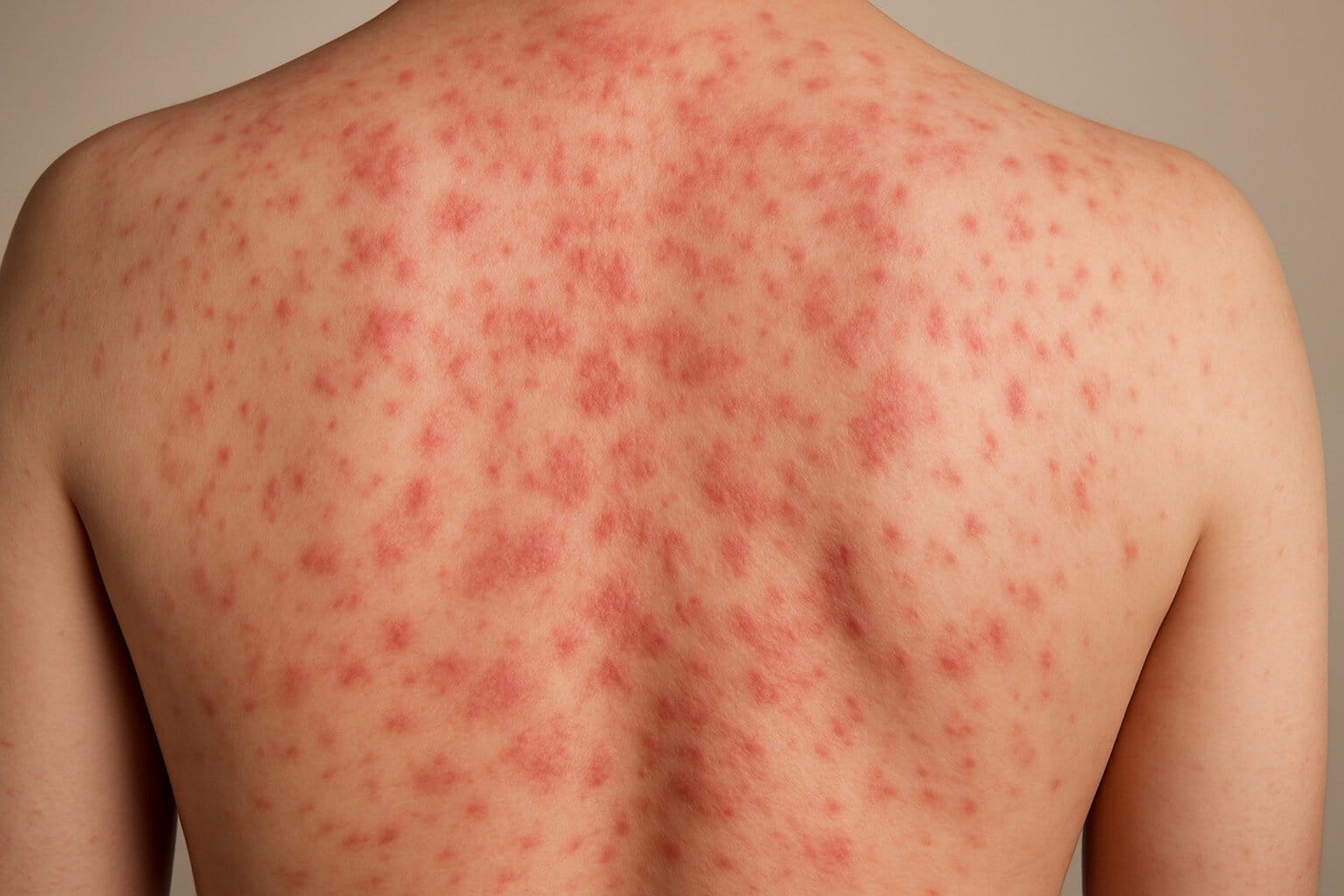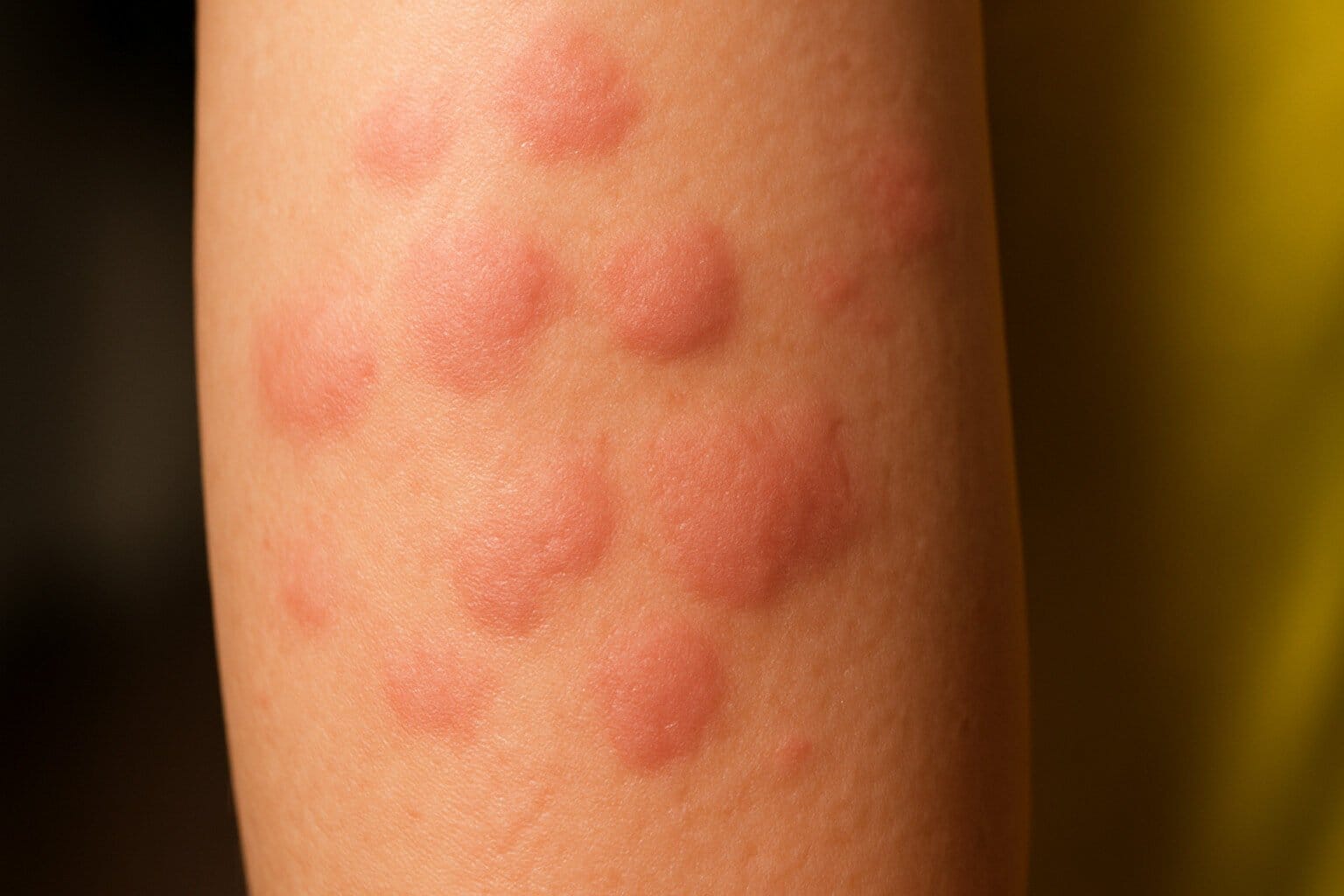Why Skin Disorders Are a Global Health Priority?

Index
- Introduction
- Why It Happens?
- Types
- Myths
- How It Happens?
- Solutions and Preventions
- Appropriate Suggestion
- FAQs
Introduction
Skin disorders are far more than just a cosmetic concern; they represent a significant global health challenge impacting millions of people, including a substantial portion of the US population. From everyday issues like acne to severe conditions like melanoma, skin disorders affect physical health, mental well-being, and overall quality of life. In the United States alone, over 85 million people deal with some form of skin condition, according to the American Academy of Dermatology.
Globally, the World Health Organization recognizes skin diseases as a leading cause of disability, emphasizing their widespread impact.
This article explores why skin disorders are a global health priority, delving into their causes, types, common myths, diagnostic methods, solutions, preventions, and practical suggestions. Whether you are experiencing a skin issue or simply want to learn more, this comprehensive guide will provide clear, accessible information tailored for US readers.
Why It Happens?
The skin is the body’s largest organ, serving as a protective barrier against environmental threats like germs, ultraviolet (UV) rays, and pollutants. It also regulates temperature and prevents water loss.
When this barrier is compromised, skin disorders can emerge due to a variety of factors. Understanding these causes is key to recognizing why skin disorders are a global concern.
Genetic Factors
Many skin disorders have a genetic basis. Conditions like psoriasis, characterized by scaly patches, or atopic dermatitis (eczema), marked by itchy, inflamed skin, often run in families.
If a parent has eczema, for example, their child has a higher chance of developing it. Genetic predispositions can also influence the severity of conditions like acne or rosacea, which affects facial blood vessels and causes redness.
Environmental Triggers
The environment plays a significant role in skin health. In the US, diverse climates contribute to different skin issues.
For instance, dry winters in states like Minnesota or Colorado can exacerbate eczema, while high humidity in Florida or Louisiana can worsen fungal infections.
Sun exposure is another major factor, particularly in sunny regions like California or Arizona, where UV radiation increases the risk of skin cancer. Pollution in urban areas, such as Los Angeles or New York City, can also clog pores and trigger acne or contact dermatitis.
Immune System Dysfunction
Some skin disorders stem from an overactive or misguided immune system. Autoimmune conditions like lupus or psoriasis cause the body to attack its own skin cells, leading to inflammation and damage. Allergic reactions, such as contact dermatitis from touching poison ivy or certain metals, also involve the immune system.These conditions can be particularly challenging because they often require long-term management.
Infections
Bacteria, fungi, viruses, and parasites can all cause skin disorders. For example, impetigo, a bacterial infection, is common among children in schools across the US. Fungal infections, such as ringworm or athlete’s foot, thrive in warm, moist environments, such as locker rooms in Texas or Georgia. Viral infections, such as herpes simplex (cold sores) or warts, are also widespread.
These infections contribute significantly to the global burden of skin diseases, as they are often contagious and require prompt treatment.
Lifestyle Factors
Daily habits can influence skin health. Poor diet, high in processed foods or dairy, is linked to acne flare-ups in some individuals. Stress, a common issue in fast-paced US cities like Chicago or Boston, can worsen conditions like eczema or psoriasis by triggering inflammation.Lack of sleep, smoking, or excessive alcohol consumption can also harm the skin’s appearance and resilience. These modifiable factors highlight the importance of lifestyle in managing skin disorders.
Socioeconomic and Access Issues
Globally, skin disorders are a priority because they disproportionately affect underserved populations. In the US, access to dermatological care can be limited in rural areas or for those without insurance, leading to untreated conditions that worsen over time.
For example, untreated eczema can lead to infections, while undiagnosed skin cancer can become life-threatening. The global scope of this issue is even more pronounced in low-income countries, but in the US, disparities in healthcare access remain a concern.
Types
Skin disorders are incredibly diverse, ranging from mild to severe. Below are the main categories, with examples relevant to the US population.
Inflammatory Disorders
Inflammatory skin conditions involve chronic or recurring inflammation. Atopic dermatitis (eczema) affects about 31 million Americans, causing red, itchy patches, often on the face, arms, or legs. It is especially common in children but can persist into adulthood. Psoriasis, affecting 7.5 million Americans, leads to thick, scaly patches, often on the scalp, elbows, or knees. These conditions can be painful and impact mental health due to their visibility.
Infectious Disorders
Infections are a major category of skin disorders. Bacterial infections, like cellulitis, can cause red, swollen, and painful skin, often requiring antibiotics. Fungal infections, such as ringworm or athlete’s foot, are common in humid US regions like the Southeast. Viral infections, including warts or shingles, are also prevalent. These conditions are often contagious, making them a public health concern in schools, gyms, and communities.
Allergic Disorders
Allergic skin reactions occur when the skin comes into contact with an allergen. Contact dermatitis, triggered by substances like poison ivy, nickel, or fragrances, causes red, itchy rashes. In the US, poison ivy is a common culprit in rural and suburban areas, especially during summer. Hives, another allergic reaction, can result from foods, medications, or environmental triggers.
Chronic Conditions
Chronic skin disorders include acne, which affects 50 million Americans annually, primarily teens and young adults. It ranges from mild blackheads to severe cystic acne, which can scar. Rosacea, affecting 16 million Americans, causes facial redness and small, pus-filled bumps, often mistaken for acne. These conditions require ongoing management and can impact self-esteem.
Skin Cancer
Skin cancer is a growing concern in the US, with over 5 million cases treated each year, according to the Skin Cancer Foundation. Basal cell carcinoma and squamous cell carcinoma are the most common types, while melanoma is the deadliest. Fair-skinned individuals and those with high sun exposure, such as in states like Florida or Nevada, are at higher risk. Early detection is critical for successful treatment.
Rare Disorders
Less common disorders, like vitiligo (loss of skin pigment) or pemphigus (blistering autoimmune disease), also contribute to the global burden. While rare, these conditions can be debilitating and require specialized care, which may be hard to access in some US regions.
Myths
Misconceptions about skin disorders can lead to stigma or improper treatment. Here are common myths debunked:
- Myth 1: Skin disorders are only cosmetic. Many conditions, like psoriasis, eczema, or skin cancer, have serious health implications, including infections or systemic complications.
- Myth 2: Dirty skin causes all skin issues. While hygiene matters for infections, genetic or immune-related disorders like psoriasis are not caused by poor cleanliness.
- Myth 3: Tanning is safe and prevents skin cancer. UV exposure, whether from the sun or tanning beds, increases skin cancer risk. Tanning beds are particularly dangerous, contributing to thousands of melanoma cases annually in the US.
- Myth 4: Only older adults get skin disorders. Infants can have cradle cap, teens battle acne, and adults of all ages develop conditions like rosacea or skin cancer.
- Myth 5: Natural remedies always work. While some, like aloe vera, may soothe mild symptoms, severe conditions require medical treatment. Relying solely on home remedies can delay care.
How It Happens?
Recognizing a skin disorder starts with noticing symptoms and seeking professional help. Common signs include:
- Redness, itching, or swelling (eczema, allergic reactions).
- Bumps, pimples, or cysts (acne, rosacea).
- Scaly or flaky patches (psoriasis, fungal infections).
- Changes in moles, new growths, or sores that do not heal (possible skin cancer).
- Blisters, sores, or crusty patches (infections or autoimmune disorders).
Self Monitoring
Beginners can start by tracking symptoms. Note when symptoms appear, their severity, and potential triggers (e.g., certain foods, stress, or weather changes).
For example, if itching worsens after using a new soap, it could be contact dermatitis. Apps like MySkinTrack or DermDiary, available in the US, can help log symptoms and share them with a doctor. Checking your skin monthly for new or changing moles is also crucial, especially if you live in high-UV areas like Texas or California.
Professional Diagnosis
Visit a dermatologist for an accurate diagnosis. They may:
- Conduct a visual exam to assess skin changes and ask about your medical history, family history, or lifestyle.
- Perform a skin biopsy, where a small sample is removed and tested for conditions like cancer or infections.
- Use patch testing to identify allergens causing contact dermatitis.
- Order cultures to detect bacterial or fungal infections.
- Use a dermatoscope, a handheld device, to closely examine moles or lesions for signs of melanoma.
In the US, dermatology clinics are widely available in urban areas like Chicago, Atlanta, or Seattle, but rural residents may need to travel. Telemedicine, offered by providers like Teledoc, is a growing option for initial consultations.
Regional Considerations
Pollen, dust, or pollution can worsen skin conditions in certain US regions. For example, ragweed pollen in the Midwest can trigger allergic skin reactions, while dry air in the Southwest aggravates eczema. Checking local environmental reports, such as air quality indexes on weather apps, can help you identify triggers.
Solutions and Preventions
Managing skin disorders involves a combination of medical treatments, lifestyle changes, and preventive measures. Below are beginner-friendly options tailored for US readers.
Medical Treatments
- Topical Medications: Creams like hydrocortisone (for eczema), retinoids (for acne), or antifungals (for ringworm) are widely available at pharmacies like CVS or Walgreens. Prescription options, like tacrolimus for eczema, may be needed for severe cases.
- Oral Medications: Antibiotics (e.g., doxycycline for acne) or antihistamines (for allergic reactions) can reduce symptoms. Biologics, like dupilumab for eczema, are newer options for chronic conditions.
- Procedures: Laser therapy can treat acne scars or rosacea. Surgery removes cancerous growths. Cryotherapy freezes off warts or precancerous lesions.
- Phototherapy: Controlled UV light can help psoriasis or eczema but requires dermatologist supervision.
- Immunotherapy: Allergy shots may reduce allergic skin reactions over time.
Always consult a healthcare provider before starting treatments, especially if you have other medical conditions or are pregnant.
Preventive Measures
- Sun Protection: Use broad-spectrum SPF 30+ sunscreen daily, even on cloudy days. Brands like Neutrogena or CeraVe are affordable and effective. Reapply every two hours during outdoor activities, especially in sunny states like Arizona or Florida.
- Moisturizing: Apply fragrance-free moisturizers, like Aquaphor or Cetaphil, to prevent dryness, particularly in dry climates like Colorado or Utah.
- Avoid Triggers: Identify and avoid allergens, such as certain soaps, jewelry, or plants like poison ivy, common in rural US areas. Patch testing can help pinpoint triggers.
- Healthy Lifestyle: Eat a balanced diet rich in omega-3s (found in fish or walnuts) and antioxidants (in fruits like berries). Avoid smoking and limit alcohol, as both can worsen skin conditions.
- Hygiene: Use gentle, fragrance-free cleansers and avoid over-washing, which can strip the skin’s natural oils.
Lifestyle Tips
- Daily Routine: Wash your face twice daily with a mild cleanser. Pat dry instead of rubbing to avoid irritation.
- Stress Management: Practice yoga, meditation, or exercise to reduce stress, which can trigger flare-ups. Apps like Calm or Headspace, popular in the US, can help.
- Skin Checks: Perform monthly self-exams to spot new or changing moles. Use the ABCDE rule for melanoma: Asymmetry, Border irregularity, Color variation, Diameter over 6mm, Evolving shape.
- Environmental Control: Use air purifiers with HEPA filters in your home, especially in polluted cities like Los Angeles or Houston, to reduce irritants.
Access to Care
In the US, dermatological care varies by region. Urban centers like New York or Miami have many specialists, but rural areas may require travel. If cost is a concern, community health clinics or sliding-scale dermatology practices can help. Check with organizations like the American Academy of Dermatology for free skin cancer screenings in your area.
Recommendation
For beginners, establish a simple skin care routine: cleanse with a gentle, fragrance-free product (e.g., Cetaphil Gentle Skin Cleanser), moisturize with a product like CeraVe Daily Moisturizing Lotion, and apply SPF 30+ sunscreen (e.g., La Roche-Posay Anthelios). These are widely available at US retailers like Target or Amazon.
For mild issues, try over-the-counter treatments, such as 1% hydrocortisone cream for itching or 2.5% benzoyl peroxide for acne. If symptoms persist beyond two weeks, or if you notice a suspicious mole, consult a dermatologist promptly.
Keep a symptom diary to track triggers, such as diet or weather changes, and share it with your doctor. For ongoing management, consider joining support groups through organizations like the National Eczema Association or the Skin Cancer Foundation, which offer resources and community support.
FAQs
- Q: Are all skin disorders contagious?
A: No, conditions like eczema or psoriasis are not contagious. However, infections like ringworm or impetigo can spread through contact. - Q: Can diet really affect skin disorders?
A: Yes, for some people, dairy or high-sugar foods worsen acne. A diet rich in fruits, vegetables, and healthy fats supports skin health. - Q: How common is skin cancer in the US?
A: Skin cancer is the most common cancer, with over 5 million cases treated yearly, per the Skin Cancer Foundation. Regular screenings are key. - Q: Can stress trigger skin issues?
A: Absolutely. Stress can worsen eczema, psoriasis, or acne by increasing inflammation. Stress management techniques can help. - Q: How often should I see a dermatologist?
A: Annual skin checks are recommended, especially if you have a family history of skin cancer or chronic conditions. Seek immediate care for persistent or suspicious symptoms. - Q: Are natural remedies effective for skin disorders?
A: Some, like aloe vera for burns, can help mild symptoms, but severe conditions require medical treatment. Always consult a doctor before relying on home remedies.
Subscribe to our newsletter!






